 This information has been archived for reference or research purposes.
This information has been archived for reference or research purposes.
Archived Content
Information identified as archived on the Web is for reference, research or recordkeeping purposes. It has not been altered or updated after the date of archiving. Web pages that are archived on the Web are not subject to the Government of Canada Web Standards. As per the Communications Policy of the Government of Canada, you can request alternate formats on the "Contact Us" page.
Military Strategy
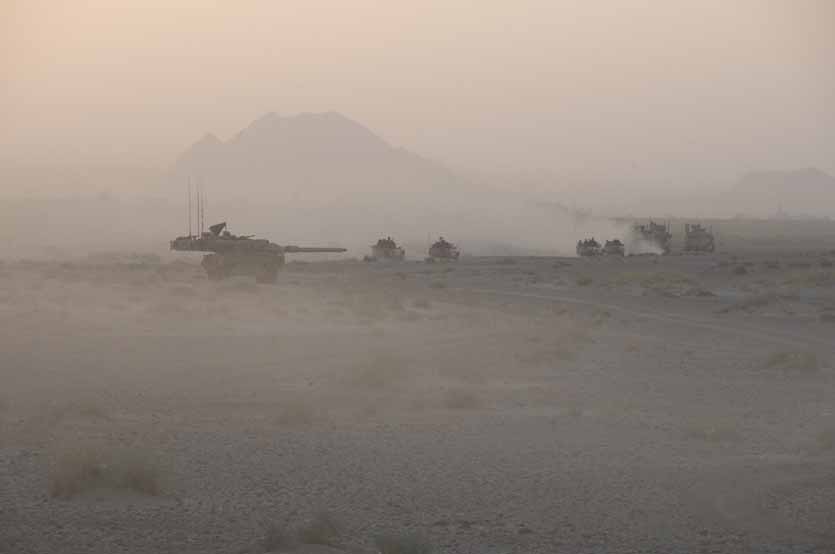
DND photos AR2009-Z051-01 by Master Corporal Jonathan Johansen
A Combat Team from Lord Strathcona’s Horse (Royal Canadians) “C” Squadron provides armoured support to American forces in the area of Mushan, Afghanistan, 4 August 2009.
The Rise and Demise of the “Three Block War”
by Doctor A. Walter Dorn and Michael Varey
For more information on accessing this file, please visit our help page.
Introduction
The “Three Block War” concept was briefly used as a military metaphor by the US Marine Corps leadership at the end of the 20th Century. It was resurrected by the Canadian Forces (CF) in 2004-2005 and touted as the new model for Canadian field operations. The core idea is that military forces conduct humanitarian, peacekeeping/stabilization, and combat operations simultaneously on three separate city blocks, or more widely. How did Canada arrive at this concept, and what has been the Canadian experience with its application? Why do some military officers consider it a vision for the future, while others consider it tragically flawed?
From Krulak to Hillier
The term “Three Block War” was coined by General Charles C. Krulak when he served as Commandant of the United States Marine Corps (1995-1999). Based upon the challenges the Marines faced in “failed states” such as Somalia and the former Yugoslavia, he offered the concept as a metaphor to describe the demands of the modern battlefield. In a 1997 speech before Washington's National Press Club, and in a 1999 issue of Marine Corps Gazette, Krulak imagined the future battlefield to be urban and asymmetrical, an environment with few distinctions between combatant and noncombatant, where sophisticated weaponry is readily available to all sides.1 A rapidly changing environment was a defining factor in his description. Such situations would require the Marines to engage in a range of activities, all more or less at the same time and within the same limited space:
In one moment in time, our service members will be feeding and clothing displaced refugees, providing humanitarian assistance. In the next moment, they will be holding two warring tribes apart – conducting peacekeeping operations –and, finally, they will be fighting a highly lethal mid-intensity battle – all on the same day ... all within three city blocks. It will be what we call "the Three Block War.2

DefenseImagery.Mil 980116-M-3360V-002 by Sergeant B.E. Vancise, USMC
General Charles E. Krulak mingles with Marines at Camp Pendleton, 16 January 1998.
Krulak's metaphor was not widely used in the Marine Corps after his departure in 1999; neither did it gain currency in other American service branches,3 nor in NATO.4 The Three Block War, however, was touted several years later by the Canadian Army as a key transformational concept. This was largely because of Lieutenant-General Rick Hillier, then Chief of Land Staff (CLS), who had served as Deputy Commanding General of III Armoured Corps of the US Army while at Fort Hood in 1998-2000. In a 2005 interview, he said that the Three Block War concept will "…significantly alter how we structure, how we prepare, how we command, how we train, how we operate and how we sustain ourselves."5; It became one of the main theoretical constructs behind his transformation policy. Army Transformation (AT), the program for restructuring the Land Forces, and the CF Public Affairs section put the Three Block War ‘front and centre.’ A widely-distributed AT poster quotes the Army Chief as follows:
Preparing for the three block war will be the foundation of all our training. Leaders at all levels must ensure that our soldiers are set up for success in all aspects of the three-block war. 6
Similarly, the Army Transformation website described the concept as "the key" for future warriors, asserting that the army "…must be prepared to fight and win the three-block war."7 The Canadian Manoeuvre Training Centre in Wainwright, Alberta, greeted visitors with the sign: “Forging Masters of the Three Block War.”
When Hillier was promoted to Chief of Defence Staff (CDS) in February 2005, he continued to champion the Three Block War concept. The Defence section of Canada’s 2005 International Policy Statement (IPS), developed with strong input from General Hillier, highlighted the concept: “…the ability of our military to carry out three-block war operations will be critical to the success of Canada's efforts”8 to restore order in “failed and failing states,” which was identified in the document as the Forces' principal future role. The IPS Overview notes that the Three Block War is “…the image that captures today’s operational environment for the Canadian Forces.”9 The concept was thus expanded from the Army to the CF as a whole. In short, through Army Transformation and the 2005 IPS, a late 1990s Marine Corps metaphor became part of the thinking of Canada’s top military leadership. Surprisingly, despite its adoption by the CF, there has been almost no scholarly literature providing critical thinking and analysis of the Three Block War.10 Given its significance, an appraisal of the concept's strengths and weaknesses remains needed, and it has clearly evident pros and cons.
Recognizing Potential Realities
The Three Block War helps convey, in part, the multidimensional nature of modern military missions. Soldiers must always be combat-capable, and, at times, combat is vital. Also, as a metaphor, the Three Block War seems to be a realistic description of some of the confused tactical situations confronting the Forces, notably in southern Afghanistan. An emphasis on the multidimensional nature of modern missions should, in principle, help expand the Canadian Forces' skills and expertise, including more diverse training and education in the humanitarian, reconstruction, and peace support fields. As Hillier noted in 2005, "…we have not put sufficient intellectual energy, and resources, and work toward the other two [non-combat] blocks specifically, and then all three blocks together."11 In other words, preparing for a Three Block War should mean that the Forces are better equipped to face the more complex challenges of 21st Century deployments. Hillier did not address the question of when or even whether the blocks can be ‘put together’ successfully.
Simplicity: When Pros become Cons
The concept can help simplify deeply complicated situations. The ‘boiled-down,’ catchy expression, “Three Block War,” makes the idea of multiple tasks easy to communicate, imparting a sense of purpose and confidence in situations lacking clear rules and defined goals. However, ‘sound-bite’ articulation is also problematic: simplicity can readily become simplistic. While it describes some of the potential tactical situations in modern, multidimensional missions, the concept's ‘one-size-fits-all’ approach risks losing sight of the special and unique nature of many missions. By ignoring that some operations are primarily humanitarian, or peace support, or outright offensive combat, the concept does not allow specificity of mission mandate, which is critical for mission clarity – both for CF personnel and for local populations.
On the opposite end of the spectrum, some missions may be far more complex, having significantly more than three elements or lines of operation. Marine Corps Lieutenant General James N. Mattis and Lieutenant Colonel Frank G. Hoffman have called for a “block” to cover the psychological and informational aspects of modern missions.12 Colonel John Agoglia, Director of the US Army Peacekeeping and Stability Operations Institute, suggested that US operations in Iraq are not characterized by the three blocks, but US forces are in a fourth block of “…governance, reconstruction and economic development.”13 There is a natural tendency toward ‘block inflation’ as various thinkers and situations find the need for additional lines of operation to cover new tasks.
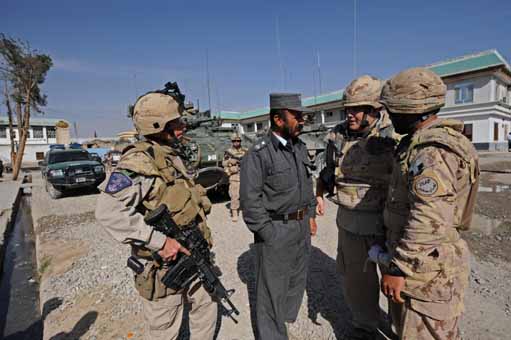
DND photo IS 2009-0172 by Master Corporal Robert Bottrill
Members of the Kandahar Provincial Reconstruction Team tour the Afghan National Police Headquarters compound in Kandahar, Afghanistan, 17 February 2009.
The Three Block War's simplicity is most problematic when the concept makes the jump from a tactical description of a reality sometimes found on the ground to a strategic vision, as it did when it was introduced in Canada. Indeed, according to Colonel Agoglia, the concept is ill-suited to serve as an overarching strategy, which it was never meant to be.14 Furthermore, it was a metaphor for one type of urban warfare that is not readily expanded to other spaces, such as the maritime and aerospace environments. Such a leap would require substantial redefinition and testing.
By classifying operations as a type of ‘war,’ the concept pushes the mind in the direction of offensive combat. In complex modern operations, the end goal is not simply to win a war, but to establish a sustainable peace, especially with a CF "…focus on the complex and dangerous task of restoring order” to difficult parts of the world.15 In other words, by emphasizing the means (warfighting), the Three Block War concept risks losing focus on the goal (peace).
A Fragile Foundation
The concept lacks a solid intellectual foundation. Briefly discussed in the US until Krulak retired as Marine Commandant in 1999, the Three Block War was not incorporated or converted into US doctrine. In Canada, there are similarly no doctrine or keystone document or case studies that test the concept objectively in different operations. Moreover, there is a lack of in-depth analyses of the concept's effectiveness, either as a description of the situation on the ground, or as a strategic objective. In lieu of detailed studies, there exists only a vague smattering of supportive language from some military personnel and the occasional politician, the latter referencing Canada's Afghan deployment.16 This shortage of deeper thinking leaves plenty of room for ambiguity.
Undefined Blocks
In the absence of an accepted definition of the Three Block War, the type, scale, and priority of the blocks are all unclear, as well as how they might fit together. In Krulak's articulation, each city block was linked to an activity: humanitarian assistance, peacekeeping, and mid-intensity warfighting for blocks one through three respectively.17 In 2005, Hillier modified the activities. He put "fighting" in block one, "helping secure, stabilize and nation build" in block two, and, most ambitiously, "helping people through disaster relief, humanitarian assistance and peacekeeping" in block three.18 Later, Hillier substituted "warfighting" with "war," suggesting the combat element is sustained.
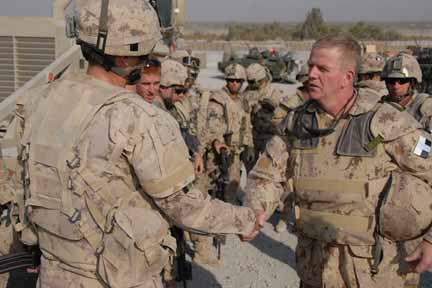
DND photo AR 2007-Z041-10
General Rick Hillier in Afghanistan in 2007.
Army Transformation further emphasized the combat element, keeping Hillier's block order, but changing the activities. Block one becomes “a high-intensity fight” against the “armies of failing states,” block two deals with “stabilization or peace support operations including counter-insurgency” (though counter-insurgency is very different from peace support) and, in block three, soldiers “deliver humanitarian aid or assist others doing it.”19 By contrast, an Army Transformation website restores Krulak's order and gives yet another spin on the block's contents. This articulation places humanitarian aid and support in block one, “stabilization and peace support operations” in block two, and a “high-intensity fight” (not the occasional mid-intensity battle of General Krulak) in block three. Finally, the 2005 IPS echoes Hillier's description, placing “combat against well-armed militia” in block one and “stabilization operations” in block two, but adds “reconstruction” to humanitarian aid in block three.20 The IPS goes even further, including naval and air force actions in adjoining areas, expanding Krulak's city blocks to an entire theatre and across vast oceans and airspace.
The fit of the Three Block War into Canada's declared doctrine, notably the 3D+C (Diplomacy, Development, Defence and Commerce), or, more recently, the "whole-of-government" approach, is left unresolved. The two concepts cannot be easily mapped onto each other – the Three Block War describes the roles of the military, not other government departments. This last issue is all the more pertinent, given that two of the three institutional leads in the 3D+C approach – the Department of Foreign Affairs and International Trade (DFAIT) and the Canadian International Development Agency (CIDA) – never adopted the term Three Block War nor integrated the concept into their existing policies.21
A Return to Warfighting
The concept's ambiguities aside, the Three Block War places a heavy emphasis upon war in contrast to the other two blocks. Beyond the ‘front-and-centre’ use of the word ‘war’ in name, the concept has been widely interpreted as a means of advancing a combat-focused agenda. Perhaps this reflected the strong desire within the forces to strengthen their combat role and capabilities after years of perceived neglect, a period Hillier disparagingly called “the decade of darkness” (until the post-911 period). The defence section of the IPS notes that to carry out a Three Block War, the Canadian Forces "…will remain, above all, combat-capable in order to deter aggression, defend themselves and civilian populations against conventional and asymmetric attacks, and fight and defeat opposing forces …."22 This statement suggests that, in terms of the CF as a whole, while the peace/stability block may be the end goal, the warfighting block has priority. The warfighting approach fosters an "enemy-centred" mentality, which can all too easily become a self-fulfilling prophecy. It favours the short-term expediency of winning battles over the ultimate goal of building a sustainable peace. The great danger is that unnecessary warfighting may be pursued in situations that mainly call for a peace support approach, where the principles of impartiality, consent, and defence (versus offence) are more appropriate. When soldiers default to combat in the Three Block War, they may miss opportunities to use other means to achieve the greater ends.
Mixed and Confused Mandates in a Fatally Flawed Concept
Given the concept's emphasis upon war, central problems remain. If an operation is primarily of the peace support or humanitarian kind, should it really be labeled a Three Block War? What kind of welcome will Canadian forces receive from a host country and local population if the declared purpose is to “fight a Three Block War” in a “failed and failing state” as the IPS suggests? While support from the local populations may not be the only factor, it is an essential component to mission success. As experiences in Iraq and Afghanistan have shown, when a mission centres upon combat/warfighting, the other two activities or “blocks” become much less effective.23 It is doubtful that it is even possible to carry out peacekeeping and play a humanitarian role while, at the same time, fighting a war against a determined enemy who can readily threaten or sabotage such efforts. Humanitarian assistance and peacekeeping form the soft underbelly of the Three Block War.

DND photo AR2009-B063-10
A Civilian-Military Coorperation (CIMIC) team on patrol near the village of Deh-e-bagh in Kandahar Province, Afghanistan, 7 June 2009.
The enormous difficulties carrying out reconstruction efforts in Southern Afghanistan highlight the difficulties of the Three Block War approach. When General Hiller urged and convinced the Martin government to assume responsibility for the Provincial Reconstruction Team (PRT) in Kandahar, he emphasized, in accordance with the Three Block War concept, that the PRT needed to be reinforced by a strong combat deployment. But he did not foresee that the conventional force component would demand so many resources and cost so many lives.24 The Canadian presence in the highly dangerous Kandahar province quickly became dominated by the troop deployment – there was only one civilian for every hundred soldiers. Military costs were 10 times greater than the civilian programs.25 When Canadian soldiers found themselves distributing aid immediately after combat, they were, in some cases, feeding those who they had just fought. It was nearly impossible to tell a Taliban ‘terrorist’ from a civilian ‘supporter.’ Most troubling for the population of Canada, which had not seen its soldiers in such combat since the Korean War, was the high rate of fatality in this “reconstruction” mission. Between 2006 and 2008, the annual Canadian fatality rate was 1.4 percent, more than double the rate of US and UK forces in Afghanistan. Ninety percent of Canadian fatalities were from hostile acts.26 Civilian reconstruction programs cannot proceed satisfactorily in such environments. Civilians are even easier targets.
Part of the problem is that the Three Block War gives rise to the very real danger of mandate confusion. Where service members try to be warfighters, peacekeepers, and humanitarian aid workers on the same day and in the same space, the distinction between operation types quickly blur, to the detriment of all. The civilian population and local fighters will find it difficult, if not impossible, to distinguish military movements (i.e., convoys) for humanitarian purposes from those deployed for offensive combat operations.27 Other players have voiced similar concerns. Humanitarian organizations, such as the Red Cross for example, have often asserted their need for "humanitarian space" that would allow them to work free from military domination or even influence, since even overt cooperation could jeopardize their much-needed impartiality or neutrality.28 The Three Block War approach compounds this problem. When lines of responsibility and mission types are blurred, a determined adversary will target humanitarian and reconstruction efforts, attacking the weakest elements of a multidimensional mission.
NATO's longstanding Peace Support Operations (PSO) doctrine29 provides a useful contrast to the Three Block War. PSOs are of six clear types: conflict prevention (action before a conflict has erupted in violence), peacemaking (discussions and negotiations for peace agreements), peacebuilding (developing infrastructure for peace), humanitarian assistance (keeping people alive), peacekeeping (preventing a reoccurrence of fighting), and peace enforcement (using force to apply the rules). More importantly, peace enforcement is used as a last resort in an impartial fashion to support a peace agreement, much as police officers would intervene impartially to enforce compliance with the domestic rule of law, though international enforcement obviously requires more force.30 Because mindsets are completely different in war and peace, US doctrine deliberately separates “War” from “Operations Other Than War” (OOTW) for good reason. The Three Block War appears to deliberately blur this distinction. The Counterinsurgency Field Manual31 of the US Army and Marine Corps reflects many hard lessons learned from Iraq and Afghanistan. The Manual bucks conventional US military wisdom by suggesting “Paradoxes of Counterinsurgency Operations” (p.47-51) such as: “Sometimes, the more you protect your force, the less secure you may be,” “Sometimes the more force is used, the less effective it is,” “Some of the best weapons for counterinsurgents do not shoot” – all lessons applied in peacekeeping operations.
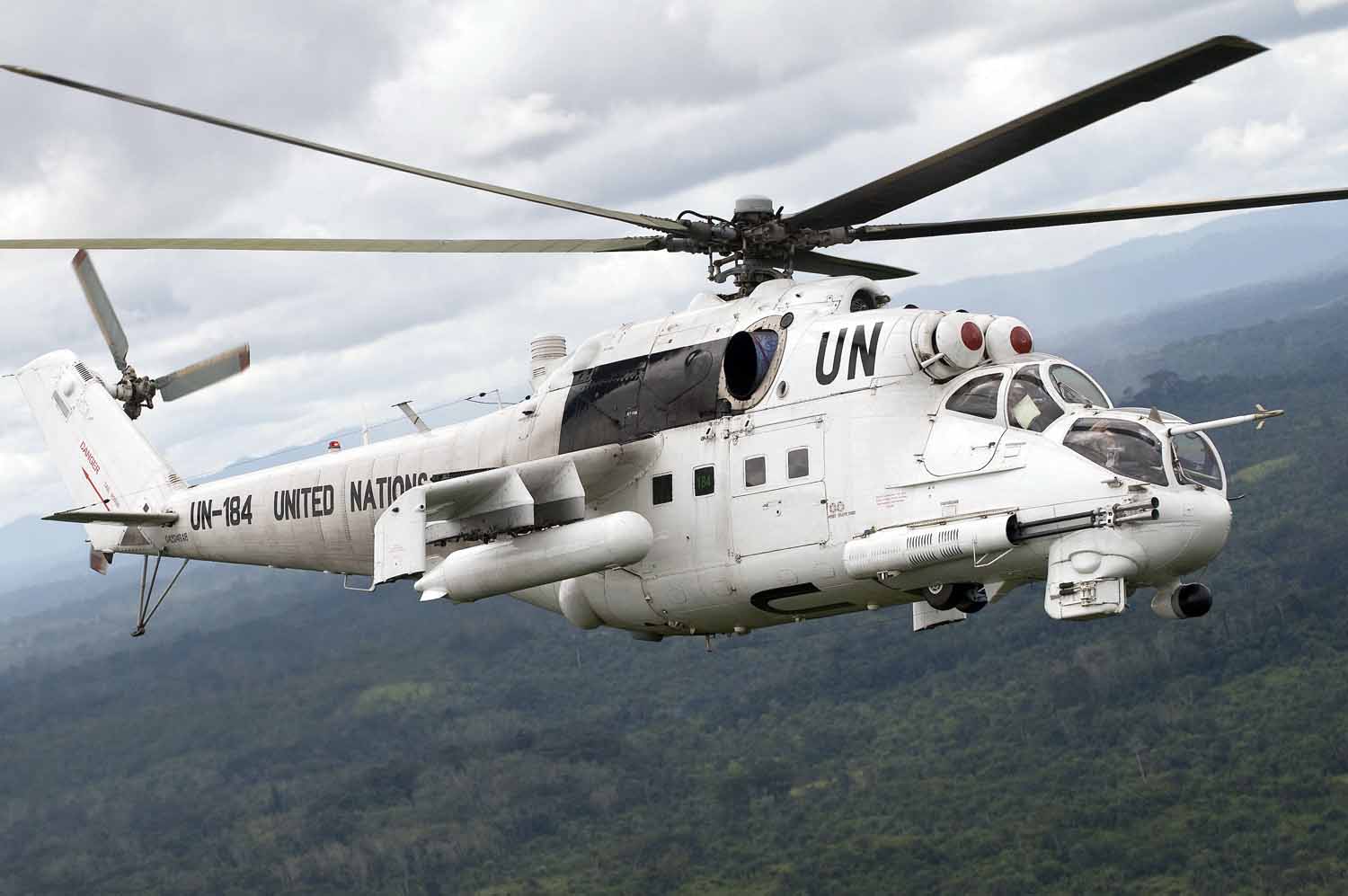
MI-35_UNMIL Photo_Cherwig_20014[2]
The peace operation in the Congo is a successful example of the alternative to the Three Block War in a complex conflict requiring Chapter VII peace enforcement. The United Nations Mission in the Democratic Republic of the Congo(MONUC) makes sustainable peace its clear objective. While mid-intensity combat does occur, there is no declared enemy. Instead, an impartial attitude is taken toward breaches of the peace. Moreover, those breaches are met with a nuanced, sophisticated response. For example, MI-35 helicopter gunships have engaged renegade brigades, but the United Nations allows a graceful retreat and negotiations in lieu of ongoing battle. Moreover, the option of brassage (merging of rebel units with the national army) is always open, although immunity from prosecution by the International Criminal Court cannot be given. The MONUC approach is widely seen as succeeding, albeit slowly, in handling one of the most complex and difficult conflicts in Africa.32 The United Nations has likewise achieved success over limb-cutting rebel groups in Sierra Leone and the dictatorial Charles Taylor regime in war-wracked Liberia. It has experience with nation-building in the presence of ruthless counterinsurgents and initially lawless regions. Through specialized peace processes, the United Nations has helped end vicious conflicts and counterinsurgencies in El Salvador, Nicaragua, Guatemala, Namibia, Mozambique, Cambodia, Timor Leste, and other former trouble spots of the world.
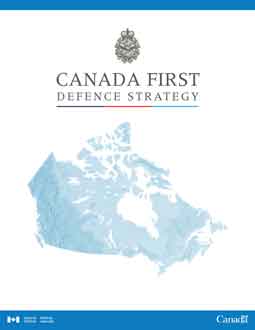
Further alternatives
The Three Block War concept was never embraced by the Canadian navy and air force. It was eventually dropped by the army. It is not mentioned in the Army’s force employment concept “Land Operations 2021,” or in the Canada First Defence Strategy.33 Newer concepts are coming to the fore, including Adaptive Dispersed Operations (ADO), Full-Spectrum Operations (FSO), Joint, Interagency, Multinational and Public (JIMP) enabled forces, and the Comprehensive Approach.34 Compared to the Three Block War, ADO, FSO and JIMP are much broader concepts, covering not just three activities, but as many (or as few) as are needed for a mission. They call for the integration and coordination of diplomatic, defence, multinational, and commercial resources along with those of many other agencies.35 The newer concepts avoid many of the problems of the Three Block War concept while still emphasizing the multidimensional nature of modern operations, as does NATO’s peace support doctrine and the UN’s evolving peace operations doctrine. Still, there is an ongoing need to develop new thinking and doctrine to describe the complex inter-relationship between the use of force and other activities in the field.
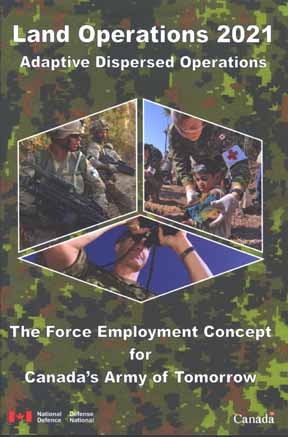
Conclusion
Given the difficulties in implementing the Three Block War idea at the operational and strategic levels, its demise is not to be mourned. While Krulak’s metaphor may be a good description of some situations faced by modern forces, it falls far short as a prescription or strategic guide because it directs soldiers to carry out incompatible tasks. Personnel cannot and should not be expected to serve as humanitarian workers, peacekeepers, and warfighters all at the same time, and within a small area. Combat should be separated as much as possible from other functions, which should, preferably, be done by distinct organizations, including UN agencies, police, and peacekeepers. The concept's lack of a firm intellectual foundation is also challenging, but not so much as the contradiction at its heart – warfighting cannot mix with peace support and other missions. The Three Block War exacerbates this problem by making it look tidy, simple, and easy. The result is that military forces may all-to-easily be sent to fight an unwinnable Three Block War. Instead of embracing Three Block War operations, militaries should try to avoid them. The construct deserves to be discarded to make way for new concepts, and the further development of doctrines that have long proven their worth in scores of operations over decades, such as the peacekeeping/stabilization operations in complex conflict environments, for which Canada has a strong reputation and much valuable experience upon which to build.
![]()
Walter Dorn is an Associate Professor of Defence Studies at the Royal Military College of Canada and the Canadian Forces College. He serves as a consultant to the United Nations, assisting UN operations in Haiti, the Congo, Timor and other conflict zones. Mike Varey received an MA in political science from the University of Toronto and is pursuing a Juris Doctor (JD) professional graduate degree in the Faculty of Law at the University of Toronto.
Notes
- Charles Krulak, “The Three Block War: Fighting in Urban Areas,” in Vital Speeches of the Day, Vol. 64, Iss. 5 (15 December 1997), pp. 139-141, and Charles Krulak, “The Strategic Corporal: Leadership in the Three Block War,” in Marine Corps Gazette Vol. 83, Issue 1 (January 1999), pp. 18-23.
- Krulak, “The Three Block War.”
- Max Boot, “Beyond the 3-Block War,” in Armed Forces Journal, March 2006. The Three Block War concept is still discussed in some courses at the Marine Corps University.
- The “Three Block War” term is not included in the voluminous NATO Glossary of Terms and Definitions produced by the NATO Standardization Agency (NSA). Document symbol: AAP-6(2007).
- Chris Maclean, “Experience is Shaping Army Transformation: Interview with Lieutenant-General Rick Hillier,” in Frontline (January-February 2005) at <www.frontline-canada.com/Defence/pdfs/0201Hillier_CLS.pdf>.
- Army Poster, Commander of the Army quoted in poster produced by Army Public Affairs, “Army Transformation: Three-Block War,” Army Transformation (AT) Poster 7 (2005).
- Canadian Army, Army Transformation at <www.army.forces.gc.ca/lf/English/5_4_1_1.asp>, accessed 10 March 2008.
- Government of Canada, Canada's International Policy Statement: Defence, p. 26, at <www.mdn.ca/site/reports/dps/pdf/dps_e.pdf>, accessed 20 June 2009.
- Government of Canada, Canada's International Policy Statement: Overview, at<geo.international.gc.ca/cip-pic/ips/ips-overview5-en.aspx>
- Vincent J Curtis, “The Three Block War: Its Causes and the Shape of the Peace,” Canadian Army Journal, Vol. 10, No. 2 (Summer 2007), pp 49-65.
- Army Transformation poster.
- Frank G. Hoffman and James N. Mattis. “Future Warfare: The Rise of Hybrid Wars,” in Naval Institute Proceedings, Vol. 132, No. 11 (November 2005).
- John Agoglia, “Learning to Fight the Four-Block War: How Commanders Learn 'Non-Military Jobs'” in Beyond the Three Block War. David Rudd, Deborah Bayley and Ewa K Petruczynik (eds.). Canadian Institute of Strategic Studies, Toronto, 2006.
- Colonel John Agoglia, comments to the author at the conference “Beyond the Three Block War,” Canadian Forces College, Toronto, 15 January 2006.
- . Government of Canada. Canada's International Policy Statement: Defence, p. 26.
- See, for example: Bill Graham, “Speaking Notes for the Honourable Bill Graham at a Luncheon of the Rotary Club of Toronto,” 21 January 2005, at <www.forces.gc.ca/site/newsroom/view_news_e.asp?id=1577>, accessed 2 April 2008.
- Krulak, The Three Block War and Krulak, The Strategic Corporal.
- General Hillier, quoted in Maclean’s, “Experience is Shaping Army Transformation.”
- Canadian Army, Army Transformation: Three-Block War. (Emphasis added.)
- Government of Canada, Canada's International Policy Statement: Defence, p. 8.
- The concept did not appear, for example, in either the Diplomacy or Development sections of the 2005 International Policy Statement (IPS). Furthermore, in the Diplomacy section, the term “failed and failing state” is replaced by a more diplomatic expression: “failed and fragile states.” See Government of Canada, Canada's International Policy Statement: Diplomacy, at <geo.international.gc.ca/cip-pic/ips/diplomacy-en.aspx>, accessed 2 April 2008 and Government of Canada, Canada's International Policy Statement: Development, at <www.acdi-cida.gc.ca/ips-development> accessed 2 April 2008.
- Government of Canada. Canada's International Policy Statement: Defence, p. 27.
- Adnan R. Khan, “Canada's Kandahar Balancing Act.” in Maclean's (19 April 2006).
- General Hillier, quoted in Janice Gross Stein and Eugene Land, Unexpected War (Toronto: Viking Canada, 2007), p. 243.
- Two years after arriving in Kandahar, DFAIT and CIDA had deployed only a dozen officials, compared to 2500 soldiers from the Canadian Forces. See Lee Berthiaume, “Death of the Three-Ds in Afghan Mission,” 12 December 2007, in Embassy: Canada’s Foreign Policy Newsweekly, at <ww.embassymag.ca/html/index.php?display=story&full_path=/2007/december/12/threedapproach>. In rough numbers, Canada provides $100 million per year in aid to Afghanistan, while the military costs are close to $1 billion per year.
- Canada lost 98 soldiers in Afghanistan in 2006, 2007, and 2008, mostly (90 percent) from hostile acts. During that period, the average number of CF troops deployed annually was 2400. The UK and US annual fatality rates in Afghanistan were significantly lower: 0.66 and 0.45 percent, compared to Canada’s 1.4 percent.
The Canadian forces were concentrated in the Kandahar region, one of the most dangerous regions of the country. The number of aid workers killed (all nationalities, but including at least three Canadians) escalated in 2008 to 23 (up to mid-August 2008) from 17 the entire year before. See: “Aid workers killed in Afghan attack”, in the Globe and Mail, 13 August 2008 at <www.theglobeandmail.com/servlet/story/RTGAM.20080813.wafghandead0813/BNStory/International - Reuben E. Brigety II, “From Three to One: Rethinking the Three Block War and Humanitarian Operations in Combat,” at <www.usafa.af.mil/jscope/JSCOPE04/Brigety04.html>, accessed 1 April 2008.
- Brigety II, “From Three to One.”
- NATO, Peace Support Operations, Allied Joint Publication AJP-3.4.1, July 2001.
- NATO, Peace Support Operations, paras. 202 and 217.
- US Army and Marine Corps, Counterinsurgency Field Manual, US Army Field Manual No 3-24; Marine Corps Warfighting Publication 3-33.5 (Chicago: University of Chicago Press, 2007), available at http://usacac.army.mil/cac/repository/materials/coin-fm3-24.pdf, accessed 23 June 2009.
- Christopher S. Chivvis, “Preserving Hope in the Democratic Republic of the Congo,” in Survival, Vol. 49, No. 2 (2007), pp. 21–41.
- Directorate of Land Concepts and Design, “Land Operations 2021: Adaptive Dispersed Operations. The Force Employment Concept for Canada’s Army of Tomorrow”, Kingston, 2007. National Defence, Canada First Defence Strategy, Ottawa, 2008, available at <www.forces.gc.ca/site/focus/first-premier/defstra-stradef-eng.asp>, accessed 21 June 2009.
- See, for instance, Andrew Leslie, Peter Gizewski, and Michael Rostek, “Developing a Comprehensive Approach to Canadian Forces Operations,” in Canadian Military Journal, Vol. 9, No. 1, pp. 11-20.
- . For more on JIMP, see: Peter Gizewski, and Lieutenant-Colonel Michael Rostek. “Toward a JIMP-Capable Land Force,” in Canadian Army Journal. Vol. 10, No. 1 (Spring 2007): pp. 55-72.






